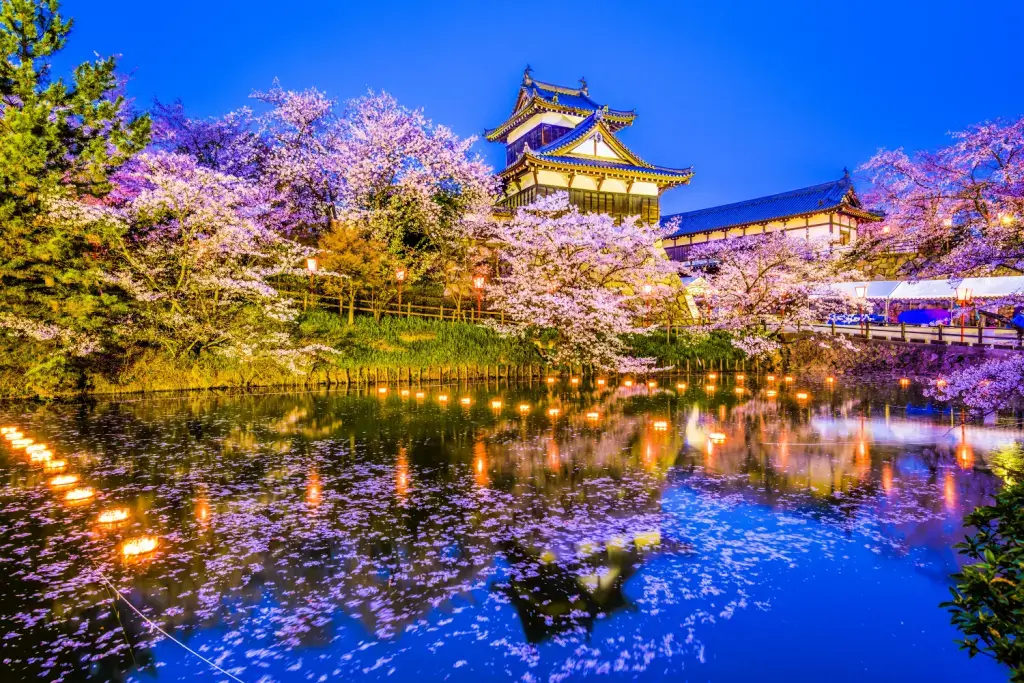A timeless legend exists in nature’s poetry—the Legend of the Sakura Tree. It brings us into Japanese folklore and is woven with delicate threads of pink blossoms. This tale is whispered through the rustle of cherry leaves. The sakura tree, celebrated as the national flower of Japan, holds secrets and stories that paint the landscape in hues of elegance.
The varieties of cherry blossoms offer a diverse and breathtaking panorama. Each tree contributes to the grand symphony of colors and fragrances that define the cherry blossom season in Japan. Let us discover the mystique behind these delicate blooms. We can explore the captivating narratives passed down through generations.
Table of Contents
ToggleWhat do cherry blossoms symbolize?

To understand the essence of the sakura tree, we must look into the rich history of Japanese culture and its symbolic language. Cherry blossoms, or sakura, signify the transient beauty of life and the fleeting nature of existence. The delicate dance of falling petals is a profound reminder to cherish the present moment. As the sakura tree graces us with its ephemeral beauty, we find ourselves mesmerized and frozen in time to appreciate its wonder. Let’s explore the most popular cherry blossom tales in Japanese folklore.
Ubazakura, the Milk Nurse Cherry Tree
One tale stands out in Japanese folklore—the story of Ubazakura, the Milk Nurse Cherry Tree. Legend has it that this particular cherry tree possesses magical properties, also serving as a nurturing figure for infants. Therefore, mothers believed that the milk produced under the shade of Ubazakura held unique nourishing qualities, ensuring the health and vitality of their little ones.

As the pink blossoms of Ubazakura bloomed, so did the belief in its mystical powers. In addition, families would gather beneath its branches, partaking in joyous celebrations and sharing stories of the tree’s compassion. In this tale, the sakura symbolizes maternal care and the eternal life cycle, wishing good luck to mothers and their infants.
Ishiwarizakura, the Stone-Splitting Cherry
Generally, the legend of Ishiwarizakura adds a touch of drama to the sakura tree narrative. This cherry tree, the Stone Splitting Cherry, also possesses an extraordinary power—the ability to split stones with its roots. According to the tale, a humble stonecutter was amazed by the magnificence of the sakura and wished to become a cherry tree himself.

In a mystical twist, his wish was granted, and he transformed into the Ishiwarizakura. As a result, the tree’s roots, fueled by the stonecutter’s spirit, could crack even the toughest rocks. All in all, this tale symbolizes the connection between human aspirations and the enduring strength found in nature, showing the essence of the sakura tree’s symbolism.
Are you looking for some delicious snacks while looking at cherry blossoms? Check out Sakuraco! Sakuraco delivers traditional Japanese snacks, teas, sweets, and snacks from local Japanese makers directly to your door so you can enjoy the latest treats directly from Japan!
Yamataka Jindai Zakura
The story of Yamataka Jindai Zakura emerges as we go deeper into the enchanting realm of cherry blossoms. Legend has it that this majestic cherry blossom tree took root in the Jindai era over two millennia ago. Not to mention, it flourished in the fertile soil of Yamanashi Prefecture’s Koshu town. Despite debates over its precise age, the tree’s resilience and enduring beauty have made it a beloved symbol of endurance and renewal in Japanese folklore.

Yamataka Jindai Zakura bursts into a breathtaking display of pink and white blossoms with each spring. Additionally, it captivates visitors from far and wide. Its ethereal beauty undoubtedly, serves as a poignant reminder of the fleeting nature of life. Celebrated in poetry, literature, and art throughout the centuries, this ancient tree also embodies Japan’s reverence for the natural world and its timeless cultural identity. Yamataka Jindai Zakura remains an iconic symbol of strength, beauty, and the enduring spirit of Japan. Overall, captivates the hearts and minds of people around the globe.
Why are these sakura tree blossoms so important?
In Japan, the sakura tree holds a revered status. Its blossoms also mark the arrival of spring and inspire the centuries-old tradition of hanami, or flower viewing. Moreover, the beauty of cherry blossoms has become intertwined with the cultural fabric of Japan, creating an annual event that draws people from around the world.

With its pink flowers and cherry blossoms, the sakura tree transcends the boundaries of culture and time. It invites us to pause, reflect, and immerse ourselves in the beauty of the present moment. As we navigate the delicate dance of life, let us embrace the transient yet exquisite nature of the sakura tree, allowing its blossoms to inspire us to live fully and appreciate the fleeting beauty surrounding us.
As we finish our time with the Legend of the Sakura Tree, we are left with an appreciation for these blossoms’ elegance and significance to the world. Have you ever witnessed the peak bloom during cherry blossom season in Japan? What does the sakura tree symbolize to you? Leave a comment below and join us in celebrating the timeless beauty of sakura!











